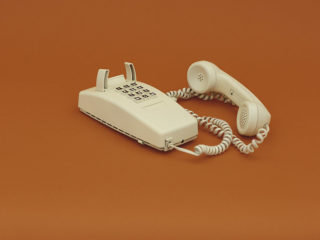In today’s age of information, it’s tough not to feel freaked out by, well, everything. We’re all guilty of frantically searching WebMD for a diagnosis that inevitably comes back as what should read “the scariest thing you can possibly imagine.”
Most of our concerns are unfounded; however, there are some potential ailments that deserve our attention ASAP. Gum disease is among them, as it affects fifty percent of adults over the age of 30.
We reached out to Dr. Wayne Aldredge, President of the American Academy of Periodontology, and Kourosh Maddahi DDS, founder of Oral Essentials, to learn more about this common inflammatory condition.
How do you know if you have gum disease?
“Things like chronic bad breath, puffy red gums, bleeding while brushing or flossing, receding gums, and loose teeth are all unsightly symptoms of periodontal disease,” says Dr. Aldredge. “Early warning signs can often be painless, which can lead to a lack of urgency and awareness.”
What are the risks of gum disease?
“If left untreated, a number of health issues can arise, such as tooth decay, tooth loss, and other serious oral health problems,” says Dr. Aldredge. “Advanced periodontal disease has also been linked to a number of systemic conditions, including diabetes and cardiovascular disease.”
How can you prevent it? What foods or activities should be avoided?
“Gum disease is mostly preventable, and in some cases reversible,” advises Dr. Aldredge. “But, the only way to prevent gum disease is brushing twice daily and flossing regularly. Regular dental checkups and discussing gum health with a periodontist are also crucial aspects to preventing gum disease. There are many factors that can contribute to gum disease, but things like smoking, diabetes, and genetics play a role in a person’s chances of having gum disease.
When it comes to foods to avoid, there is an obvious reason to keep away from sugary foods and drinks. Foods high in sugar and carbohydrates can create acidic environments in the mouth. The bacteria that can lead to periodontal disease thrive in these kinds of environments, feeding off of the sugar that lingers from the food we eat.”

Is there any way to cure gum disease without medical intervention?
“While there are many who tout so-called cures for periodontal disease that do not require professional intervention, there is very little evidence supporting the effectiveness of these approaches,” says Dr. Aldredge.
“The best and most certain way to treat periodontal disease is by working with a periodontist, who can offer a range of treatment options based on the state of the disease. Non-surgical treatments include scaling and root planing, which deep cleans the surface of the tooth roots to remove plaque, tartar, and bacteria. Advanced periodontal disease may require surgical treatments like periodontal pocket reductions and regenerative procedures.”
Are receding gums caused by gum disease?
“There are a number of causes of gum recession, but the most common cause by far is periodontal disease. The first step in treating this condition is to address its cause. In instances of gum disease, the patient may undergo a deep cleaning — known as scaling and root planing — to clean the teeth and heal any inflammation in the gums. In severe cases, gum recession may expose tooth roots, requiring such procedures as a pocket depth reduction (in which the periodontist folds gum tissue back over the tooth root after removing bacteria from the space created between the tooth and the gum) or gum graft surgery, in which new gum tissue is regenerated using healthy tissue from elsewhere in the mouth.”
What ingredients should we be avoiding in our dental products? And is this advice one size fits all, or is it a case-by-case?
“Each case is different, but for the majority following a proper gum health routine can be the best defense against gum disease,” says Dr. Aldredge. “A proper gum health routine is brushing twice daily and flossing once or twice daily.”
Dr. Maddahi agrees, but adds a warning. “Brushing continues to be the best way to mechanically remove the plaque which contains bacteria,” he says. “You should, however, avoid products which contain artificial dyes, alcohol and unnecessary harsh chemicals such as SLS and petroleum-based glycerine. You should instead look for products that contain sea salt, essential oils and aloe.”
… avoid products which contain artificial dyes, alcohol and unnecessary harsh chemicals such as SLS and petroleum-based glycerine. You should instead look for products that contain sea salt, essential oils and aloe.
Is there a certain type of toothbrush we should be using?
Soft,” says Dr. Maddahi. “Electric toothbrushes are good if it used properly, otherwise there will be a lot of damage.”
How important is flossing? Is there a certain type of floss or frequency recommended?
“There’s an old adage that says, ‘Only floss the teeth you want to keep.’ To avoid gum disease, the spaces between the teeth need to be kept clean,” says Dr. Aldredge. “There are a number of methods and devices that enable a person to clean the spaces between the teeth. Using a floss holder, interdental brush, or electronic device — whichever is recommend by a person’s dentist — after eating and drinking can help remove food particles and plaque from spaces that brushing cannot reach.
Patients should consult with their dentists about which types of floss best suit their individual needs. Waxed floss typically glides more easily between the teeth, especially teeth that are close together. While unwaxed floss has no coating, some find that its thinness allows it to get between teeth more easily. The important thing to remember is that regardless of which type of floss you use, you should use it every day.”
Does tongue scraping help?
“Gum disease is caused by bacteria that get below the gum line, leading to painful, swollen gums,’ says Dr. Aldredge. “Tongue scraping can be helpful in removing some of the bacteria, but the most effective way to remove bacteria is brushing twice daily and flossing regularly.” Dr. Maddahi adds, “If one is able to use sea salt based rinse along with flossing and brushing, the need for tongue scraping is dramatically reduced.”
Is there one thing you would say most of us are doing wrong?
“Not using a mouthwash. Since brushing and flossing cover only 24% of the oral tissues, bacteria can still live on the tongue. cheeks and other areas of the mouth.”
If you’re experiencing any of the symptoms of gum disease — chronic bad breath, puffy red gums, bleeding while brushing or flossing, receding gums, and loose teeth — see your dentist as soon as possible. Regular cleanings and daily flossing, brushing and scraping are the best methods for prevention!
Image via Hannah Burton












1 comment
Sometimes I have stiff shoulders after using a computer for a long time. A good work-out with weights always seems to make that go away. Well, the information that you share in the article very informative. I really admired this.